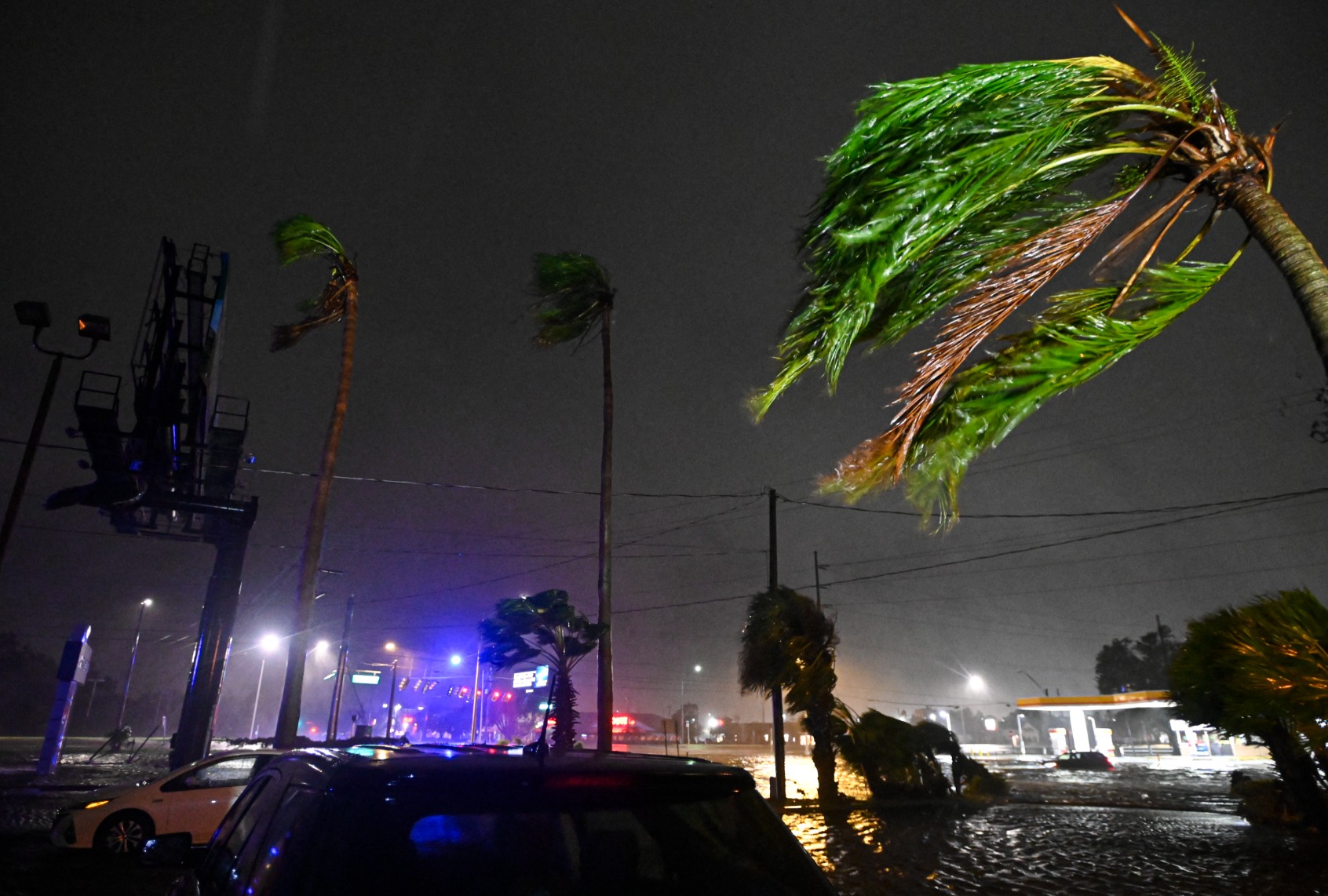Hurricane Milton left millions without power and caused a series of tornadoes after slamming into Florida Wednesday night.
Milton made landfall at around 8:30 p.m. near Siesta Key, Florida, a barrier island in the Gulf of Mexico, off the coast of Sarasota.
It came barreling through as a Category 3 storm, with maximum sustained winds at 120 mph. Throughout the course of its destruction, it weakened to a Category 1 storm while still causing severe damage. As residents wake up, the destruction will become more visible as flooding is expected to continue over the weekend.
Before making landfall on Wednesday evening, there were over 100 tornado warnings across the eastern part of the state, many of which occurred in South Florida.
According to a Facebook post from the Palm Beach Fire County Rescue, there were multiple reports of tornadoes and associated injuries in the Wellington, Acreage and Loxahatchee areas. Firefighters transported five patients, including three trauma patients.
There were “many more walk-up patients with minor injuries,” according to the Facebook post. In St. Lucie County, Fla., the local sheriff confirmed multiple fatalities from the estimated six to 12 tornadoes that touched down in the area. Fatalities were being reported at Spanish Lakes Country Club, a senior community near Fort Pierce. As of early Thursday morning, it remained unclear how many people had been killed.
One resident described witnessing a tornado to TCPalm: "I saw a semi knocked sideways, a truck knocked sideways," he said. "It looked like someone had dropped a weight from the sky and flattened a bunch of houses."
A tornado also destroyed the St. Lucie County Sheriff’s storage building.
According to the latest data from poweroutage.us, more than 3 million Floridians were without power by 5 a.m. Thursday. The worst affected areas were coastal ones, such as Sarasota, Pinellas, Hillsborough and Manatee counties.
Power outages weren’t limited to Florida, as Georgia and North Carolina experienced power outages throughout the night, too.
We need your help to stay independent
It wasn't only power outages that Florida residents had to deal with in the storm; St. Petersburg preemptively shut down its sewage plant, to protect employees and the sewage plants from the storm surge, meaning residents who did not evacuate could not flush their toilets, wash clothes, shower or do their dishes. Later, a video showed a crane crashing into a building in St. Petersburg.
Strong winds tore through the roof off Tropicana Field in St. Petersburg, the stadium that is home to the MLB's Tampa Bay Rays. Earlier this week, Florida Governor Ron DeSantis announced that the stadium would be turned into a “10,000-person base camp” to support “ongoing debris operations and post-landfall responders” to prepare for Hurricane Milton. According to the New York Times, the roof of the stadium was reportedly built to tolerate wind speeds up to 115 miles per hour.
OMG. We all had a collected gasp when we saw this from our reporter. The fabric on the roof of Tropicana Field is shredded. #StPete #Milton pic.twitter.com/36UKLO9cK6
— Jason Adams (@JasonAdamsWFTS) October 10, 2024
Milton did not make a direct hit on Tampa as expected, and instead swerved a little bit south. However, the storm did cause a reverse storm surge, pushing water out of the city's bay. There were also reports of people trapped at a Holiday Inn in Plant City, east of Tampa, with water rushing into the bottom floor of the hotel, according to CNN.
Want a daily wrap-up of all the news and commentary Salon has to offer? Subscribe to our morning newsletter, Crash Course.
Very early on Thursday morning, FEMA Administrator Deanne Criswell confirmed to BBC radio that more than 70,000 people took refuge in government shelters throughout the night; 31 counties across the state had issued evacuation orders. At the time, Criswell warned that despite the wind decreasing, a major threat was the storm surge and flash flooding.
“You need to stay put,” Criswell said. “Don’t go out, try to make sure you’re as safe as possible."
Around 4 a.m., the center of the hurricane made its way to Cape Canaveral with sustained winds of 83 mph. Despite the hurricane starting to move off the coast, the National Weather Service in Tampa Bay warned that the impacts from the storm weren’t over yet. The agency warned on X there were “multiple reports of flooding areawide with dangerously high water in some areas.”
At 5 a.m., the National Hurricane Center confirmed that Milton was moving off the coast of east-central Florida. However, it was still “producing damaging hurricane-force winds and heavy rains.” The NHC emphasized the danger of a “life-threatening storm surge” along the east coast of the state. Residents were still told in central and northern parts of Florida’s east coast to “remain in an interior room” and stay away from windows.
As daylight broke, emergency rescue crews started to gather to better assess the areas that were impacted overnight. Hillsborough County Sheriff’s Office announced on Facebook that “post-storm recovery efforts” were already underway.

